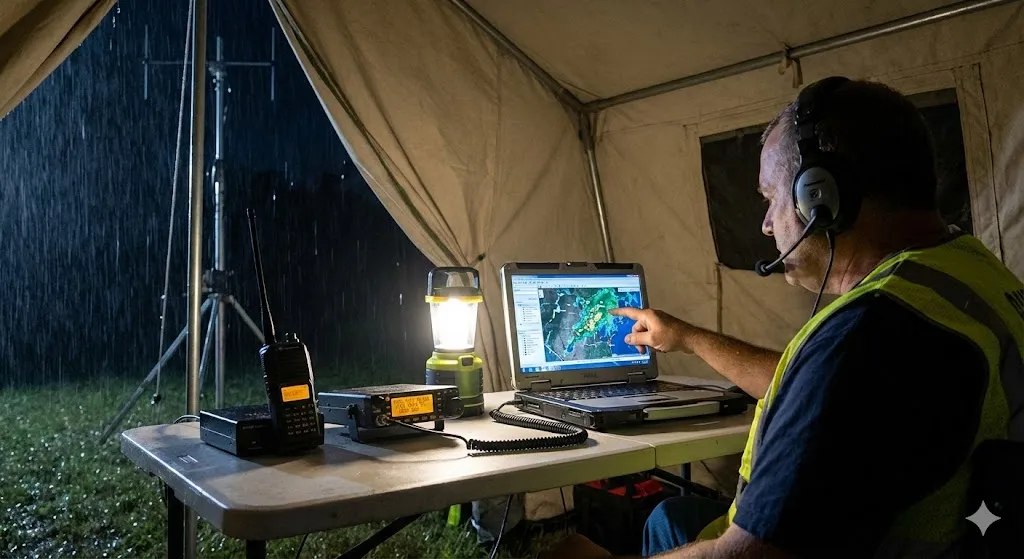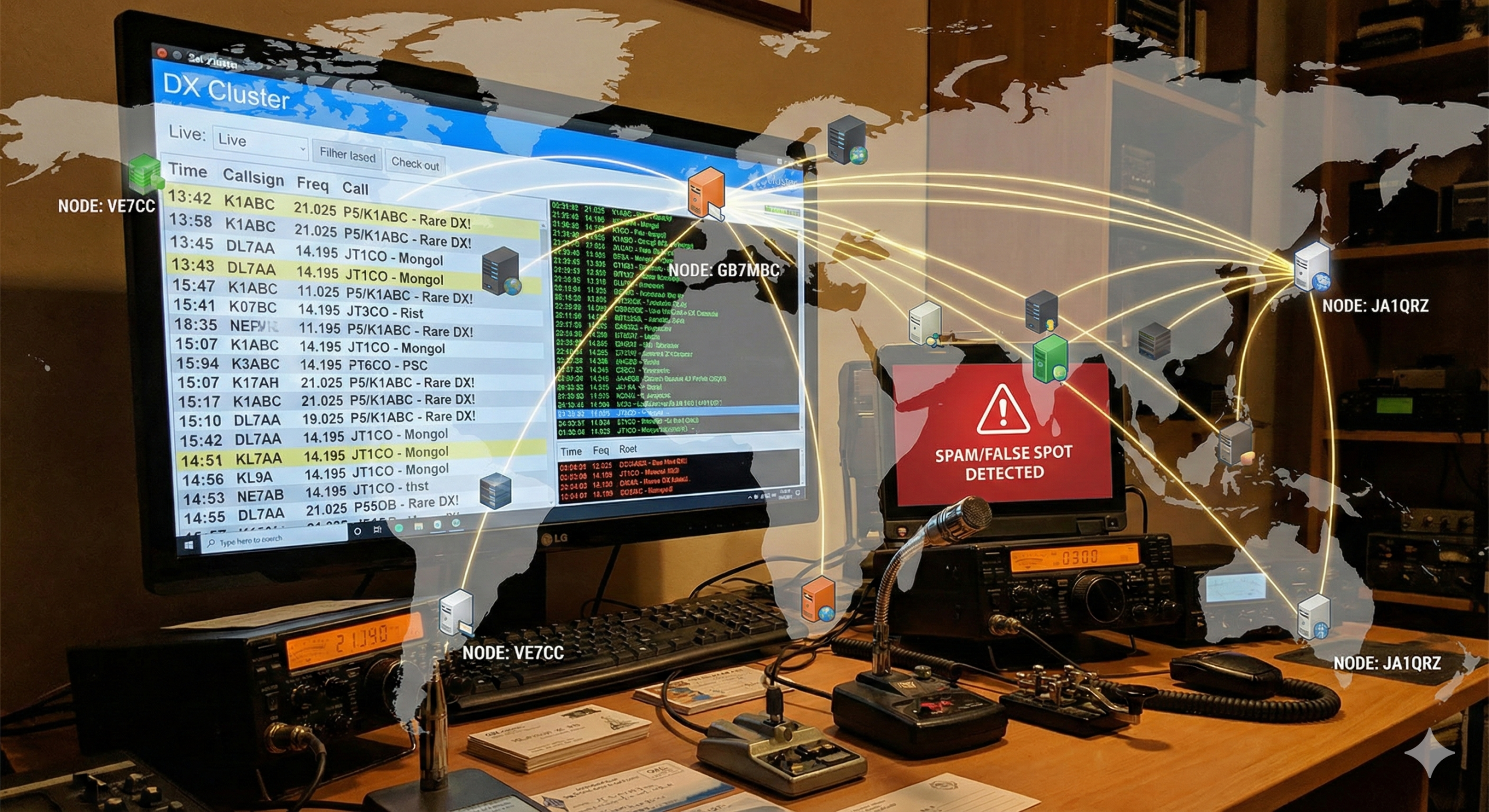Learn Morse Code Using CWIRC On Linux
History Of Morse Code
Samuel F. B. Morse (1791-1872) was a painter and founder of the
National Academy of Design. In 1832, while on a ship returning from
Europe, he conceived the basic idea of an electromagnetic telegraph.
Experiments with various kinds of electrical instruments and codes
resulted in a demonstration of a working telegraph set in 1836, and
introduction of the circuit relay. This made transmission possible for
any distance. With his creation of the American Morse code, the
historic message, “What hath God wrought?” was sucessfully sent from Washington to Baltimore.
The Morse code used in those days differed greatly from that which is
used today. Morse code originated on telegraph lines and the original
users did not listen to tones but instead to the clicking sounds
created by sounders. They used the American Morse code as opposed to
today’s International Morse. When sending dahs (Morse code is composed
of dits or short key closures, and dahs or longer key closures) the
user simply sent two close-together dits. This was created by using a
conventional code key.
became more widespread. Users of the international Morse created dahs
with a longer key closure, instead of two close-spaced dits. In order
to increase transmission speed on early landline circuits and later on
radio circuits, semi-automatic “bug” keys were invented in 1902 and
were widely adopted. Bug keys used a vibrating pendulum to create dits
and the user still manually creates the dahs.
electronically create dits and dahs. Iambic keyers have a memory so
that the user can operate a mechanical “paddle” quicker than the keying
rate of the keyer. This makes for very comfortable and nearly
effortless keying.
to write as they receive, and when transmitting, can easily converse at
20 to 30 words per minute. Morse code will always remain a viable means
of providing highly reliable communications during difficult
communications conditions.
IRC was born during summer 1988 when Jarkko “WiZ” Oikarinen wrote the first
IRC client and server at the University of Oulu, Finland (where he was
working at the Department of Information Processing Science).
tolsun.oulu.fi, to allow news the usenet style, real time discussions and
similar BBS features. The first part he implemented was the chat part, which
he did with borrowed parts written by his friends Jyrki Kuoppala and Jukka
Pihl. It was initially tested on a single machine, and according to the
words from Jarkko himself “The birthday of IRC was in August 1988. The
exact date is unknown, at the end of the month anyways.”. The first IRC
server was named tolsun.oulu.fi.
Jyrki Kuoppala pushed Jarkko to ask Oulu University to free the IRC code so
that it also could be run outside of Oulu, and after they finally got it
released, Jyrki Kuoppala immediately installed a server (which later became
irc.cs.hut.fi). This was the first “irc network”.
at the same room and had nothing to do, so I decided to crack into tolsun
(the irc server Sun machine at Oulu), and naturally 😉 got in through a new
hole in sendmail. (At that time Jyrki was still the best cracker I
knew…)”
Jarkko got some friends at the Helsinki and Tampere Universities to start
running IRC servers when his number of users increased.
the client. At this time Jarkko realized that the rest of the BBS features
probably wouldn’t fit in his program!
Jarkko got in touch with guys at the University of Denver and Oregon State
University. They had got an IRC network running (they had got the program
from one of Jarkko’s friends, Vijay Subramaniam — the first non-finnish
person to use IRC) and wanted to connect to the finnish network.
IRC then grew larger and got used on the entire Finnish national network –
Funet – and then connected to Nordunet, the Scandinavian branch of the
Internet.
In November 1988, IRC had spread across the Internet.
In the
middle of 1989, there were some 40 servers worldwide.
ircII was released 1989 by Michael Sandrof.
In July 1990, IRC averaged at 12 users on 38 servers.
In 1990, a new network was set up in order to develop a new version (2.6) of
the ircd. The network named ChNet (about 25 servers and no users) existed a
few months before disagreements among the programmers caused it to dissolve.
(chat rooms) at the same time, talk publicly, private one-on-one conversations etc. Even file transfers are possible.
the internet using IRC servers as reflectors. The transmitted morse code can be
received in near real-time by other X-Chat clients with the CWirc plugin. CWirc
tries to emulate a standard amateur radio rig : it sends and receives morse
over virtual channels, and it can listen to multiple senders transmitting on
the same channel. Morse code is keyed locally using a straight or iambic key
connected to a serial port, or using the mouse buttons, and the sound is played
through the soundcard, or through an external sounder.
Note that CWirc doesn’t do any morse decoding : it simply transmits and
receives morse code timing events. A standard IRC user on the same IRC channel
you’re transmitting morse on will only see coded lines when morse code is
transmitted. Only other CWirc users can receive what you send.
Who invented Linux? Linux is the first truly free Unix-like operating
system. The underlying GNU Project was launched
in 1983 by Richard Stallman originally
to develop a Unix-compatible operating system called GNU, intended to be
entirely free software. Many programs and utilities were contributed by developers
around the world, and by 1991 most of the components of the system were ready.
Still missing was the kernel.
itself. In
1991, Torvalds was a student at the
University of Helsinki in Finland where he had been
using Minix, a non-free Unix-like
system, and began writing his own kernel. He started by developing device drivers
and hard-drive access, and by September had a basic design that he called
Version 0.01. This kernel, which is called Linux, was afterwards combined with
the GNU system to produce a complete free operating system.







Post Comment